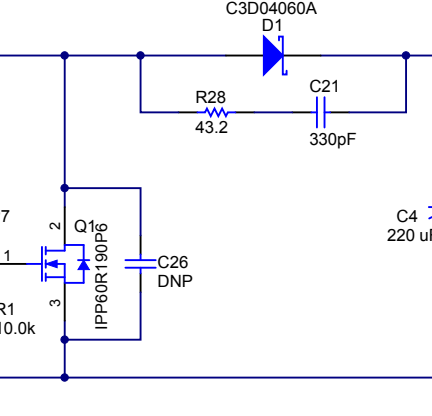Other Parts Discussed in Thread: TIDA-00443
Tool/software:
Subject: Clarification on CE Emission Compliance & Support for UCC28180-based 650W PFC Design
Dear TI Support Team-,
Dear Tom,
We are currently using the UCC28180 PFC controller in one of our designs with the following specifications:
-
PFC Output Power: 650W
- Input Voltage Range: 165Vac to 280Vac
-
Output Voltage: 396VDC
-
Switching Frequency: 70kHz
We are facing an issue during Conducted Emission (CE) testing as per EN 55014-1 Class B. The CE test results show peaks in both Quasi Peak and Average levels in the frequency range of 9 MHz to 16 MHz.
To analyze this, we referred to TI’s reference design TIDA-00443 (900W PFC design). In the CE results for TIDA-00443, we observe emissions peaking around 18 MHz to 30 MHz. However, the reference guide does not clearly mention whether the results pertain to Class A or Class B compliance. Could you please clarify this?
Additionally, please find attached our CE test results (PDF) for reference.
We would also like to know:
-
Does TI offer any reference design compliant with EN 55014-1 or EN 55032 Class B for power levels ≥500W, ideally around 650W?
-
Are there any updates or design guidelines for UCC28180 specifically addressing CE compliance?
-
Any recommendations for filtering or layout changes to reduce the 9–16 MHz conducted emissions?
We appreciate your support and look forward to your guidance.
Best regards,
BR Kadam


